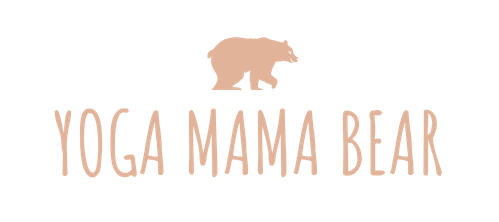What style of yoga is right for you?
When someone says, “I don’t like yoga,” it’s kind of like saying “I don’t like food.”
You might not like all styles of yoga, but the styles can differ so much that I truly think it’s impossible for anyone to hate every type of yoga. Yoga nidra, for example, is like naptime yoga. And I mean … who doesn’t like to sleep?
If you’re interested in trying yoga, I recommend taking this quiz to see what styles might be compatible with your goals/lifestyle/etc. I’ve also outlined some brief descriptions of the styles I teach and/or practice, as well as the type of person I think they suit, below.
And don't forget, if you're just getting started on your yoga journey, I have more resources, information and free yoga class information for you here.
Let's dive into these yoga styles, shall we?
Power Yoga
The C1 and C2 formats at CorePower yoga fall into this category. Power yoga involves strengthening postures held for a few breaths for intensity mixed with flow for a cardiovascular workout. It may or may not involve heat and the sequence generally varies depending on what the instructor digs. I love power yoga because of the variety. (Plug: I teach C2 on Wednesday nights!)
Good for: Someone looking for a challenging workout with the mindfulness and presence of yoga.
Vinyasa Yoga
Similar to power, except you take a vinyasa after each sequence. (In power yoga it’s an option — you might not take it every time.) A vinyasa is the following sequence (shown in the gif below): high plank —> chatturanga (low plank) —> upward facing dog —> downward facing dog. Vinyasa is the most flowy, dance-like style of yoga as you don’t hold postures.
Good for: Someone who is musically-driven and wants to move (cardio workout).
Hatha Yoga
Technically, all Western yoga falls into this category. However, when a class is described as hatha it generally refers to a style of yoga that is similar to power, except you do not take any vinyasas. All poses start from the basic standing posture: mountain pose (tadasana). Poses are generally held for a few breaths. Typically this is a more gentle form of yoga and is great for beginners as you learn the basic postures.
Good for: Someone just starting a yoga practice or wants a gentle practice.
Bikram Yoga (Hot Yoga)
A set series of 26 postures in a room heated to 105 degrees. Traditionally, it is practiced in a carpeted room without music. Classes are 90 minutes long. I wrote more about it here.
Good for: Someone who likes structure and heat and wants a strong, challenging practice.
Hot Power Fusion
This is a CorePower Yoga sequence. It’s similar to the Bikram sequence but it’s condensed to an hour, there’s a little bit of flow and it’s not quite as hot (100-103). Also, hardwood floors and music. (Plug: I teach this as a candlelight class on Monday nights!)
Good for: Someone who likes the heat and challenge of Bikram but wants music and hardwood floors. Also great for athletes, runners, cyclists or anyone who’s really active and is looking for an active recovery.
Restorative Yoga
Restorative yoga is one of my favorites. This is a prop-heavy style of class (bolsters, sandbags, blocks) where postures are held for a longer period of time to emphasize recovery. Holding poses longer not only feels amazing, but it also helps you build more permanent flexibility. This style is wonderful for athletes, runners or anyone who has a very active lifestyle and could benefit from slowing down.
Good for: Anyone with stress or anxiety. (So that’s like all of us, right?) Also great for someone who is typically drawn to more fast-paced workouts and is looking for balance.
Yin Yoga
Another favorite of mine. This is essentially the same as restorative yoga except that postures are held even longer. (Bliss!)
Good for: See restorative yoga above. You’re the same peeps.
Ashtanga Yoga
Ashtanga is a set sequence, similar to Bikram, except there are different levels. You must master one sequence before moving on to the next. It’s practice in a warmish room (85 degrees).
Good for: A dedicated Type A yogi who likes structure and a good challenge.
Iyengar Yoga
Iyengar is all about the details. It’s focused heavily on alignment and postures are held for longer periods of time so you can get that perfect form. Props are used a lot. This is huge mental challenge and gets you out of your comfort zone because you’ll want to get out of the pose early.
Good for: A detail-oriented yogi who geeks out on alignment and anatomy or someone looking for an endurance challenge.
Kundalini Yoga
A style of yoga focused on energy and moving it up the spine. It involves repetitive, intense physical exercises, breath work (pranayama), chanting, singing and loads of meditation. It’s a pretty amazing practice.
Good for: Someone looking for a spiritual practice and likes things that are a bit woo woo.
Yoga Nidra
The yoga of sleep. It puts you in between sleep world and awake world in a light state of pratyahara. I wrote about this lovely practice here.
Good for: Anyone who struggles to rest. This has been used to treat PTSD and sleeping disorders. Also, anyone who wants to take a mindful nap. I for one, love it.

